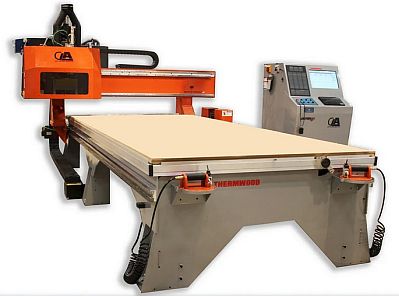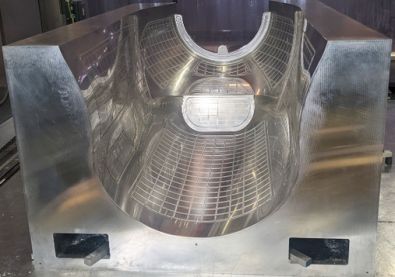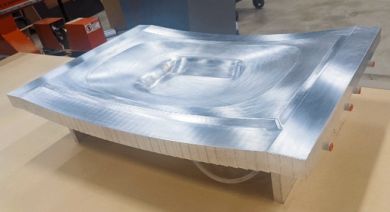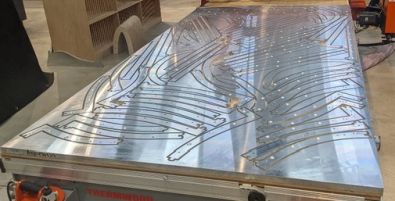Cut Layer Additive Machine: Additively Manufactures Parts Using Material That Can't Be 3D Printed

Cut Layer Additive is a simple idea that, until now, didn't make sense.
Cut Layer Additive builds large, near net shape additive parts, from any material that can be machined. Like extruder based additive printers, parts are made in layers, stacked on top of one another, resulting in a hollow shell. However, instead of extruding those layers, they are cut from sheets of material and assembled, using exclusive advanced technology.
3D printing is generally what people think of when we say "additive manufacturing" when actually, additive manufacturing is making parts by adding material, rather than subtracting it. Cut Layer Additive is a whole new approach to doing just that, for large parts.
Cut Layer Additive is simply machining or cutting out layers of material and adding them on top of one another. It works with any material that can be cut or machined.
In order to efficiently cut the layers from sheet material, each layer needs to be separated into segments which can then be tightly nested for machining. The layer-segments are then re-assembled into complete layers.

Aluminum aerospace trim fixture made using cut layer additive process.
Although it can make large industrial parts, tools and molds at an almost unbelievably low cost, creating nested CNC programs to machine hundreds upon hundreds of individual layer-segments that must all precisely mesh together to make a single part is a monumental programming task, virtually impossible using traditional programming. It just doesn't make sense. Programming costs would overwhelm any possible savings.
Now, with Thermwood's Cut Layer Additive, the programming task is gone, leaving only the benefits.
This is only possible because of cutting-edge Machine Intelligence. Instead of sending it a CNC program, Thermwood's Cut Layer Additive machine has been taught, and so inherently knows, how to make Cut Layer Additive parts.
The only thing required to make a part using Cut Layer Additive is to tell the machine what you want to make.
This is done in two steps.
Step one is to "Send it the Shape" by sending it a CAD file, which defines the outer surface of the part. You don't need a detailed file, just the basic shape.
Step two is to "Tell it how you want it made," that is, what material do you want to make it from, how thick do you want the walls, how much trim stock do you want, how many segments do you want on each layer, things like that. This is done interactively using dynamic graphics.

This is a Cut Layer Additive Thermoforming mold made of aluminum.
It's simple enough that it can be done using a touch screen, right at the machine, or you can use a desktop, do it in the office and send it to the machine for processing. It takes a tiny fraction of the time it would otherwise take using traditional programming.
Once the machine knows what you want to make, it automatically creates the additive part and the layer segments needed to make it, nests them on your material and creates an internal multi tool program to cut it all out.
Dowel holes are machined between layers to assure assembly alignment, making assembly quick, easy and accurate.
It prints the layer number and position on each layer-segment to make sorting and final assembly really easy. It also prints a QR code in case you ever need to re-make that particular part.

Breaking layers into segments means highly efficient nesting.
When actually cutting, it guides the operator through the entire cut process, step by step. When nesting, it prioritizes parts from early layers so that you can begin assembly while the machine is still cutting.
Although assembly may sound involved, printed labels, precision machined joints and dowel alignment, make assembly surprisingly quick and easy. Overall, the entire process, cutting and assembly, takes, at most, the same amount of time as a thermoplastic additive printer takes to produce the same near net shape part.
With some material it's even faster, sometimes a lot faster, according to the company.
The final result is the ability to quickly make large, incredibly low-cost parts using an approach that, until now, didn't make sense.
Want more information? Click below.
Rate this article
View our terms of use and privacy policy ::m::